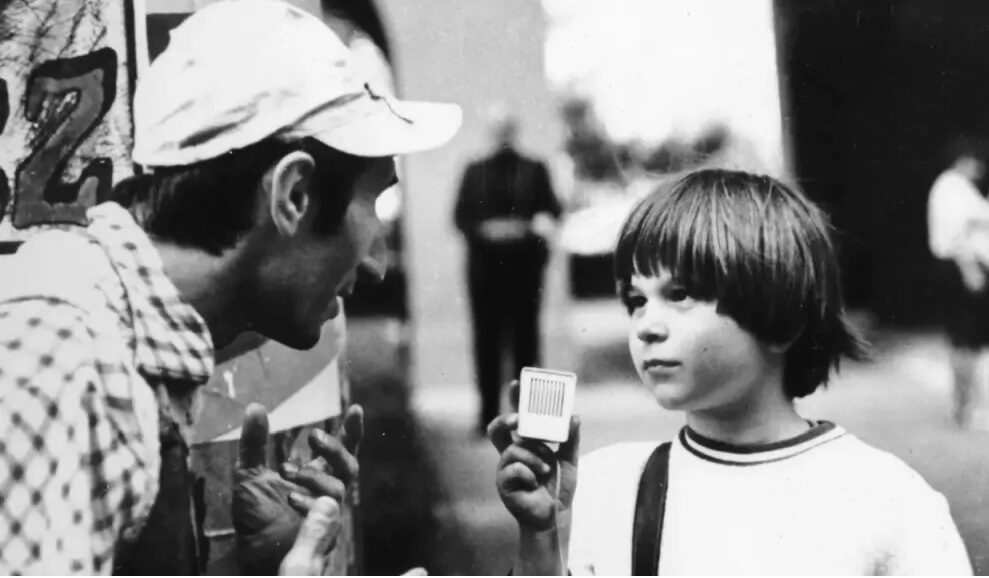Hard Hat and Potato Nose was one of the most successful youth series of the seventies. It was made in the summer of 1973, and the film cut from the series was shown five years later, on August 31, 1978.
Perhaps even those born in the '90s remember the film Hard Hat and Potato Nose, which was a defining work of generations' childhoods. Although many of us were afraid of clowns as children, in this film series we somehow forgot about the bad feelings, because we loved the children and their adventures, and of course there was something charming about the constantly grumbling Bagaméri.
Looking back today, the film gives much more than it once did, as the frames take you to the past. Why do we love it? Well, there are those who watch the streets of Budapest with prying eyes to see what has changed since then, but there are also those who remember their own childhood, since they wandered around during the summer holidays just like the children in the movies.
Still another tells how, for him, this film is the proof that the world used to be better, because we were really in less of a rush, we were more attentive, and there was time for the other person. There is a unanimous opinion that Hard Hat and Potato Nose has a charm that is almost inimitable - this made it one of the best Hungarian youth films of all time!
All of this - along with many others - is primarily the merit of the writer, István Csukás - to whom even without Keménykalap and potato nose, Hungarian film production would owe a lot, since the names of Mirr-Murr, Pom Pom and Süsü are also attached to him.
There were a few differences between the book and the film, for example the stolen animals, because in István Csukás's story turtles are stolen, not monkeys, while the little girl in the film, Péterke, was Péter in the novel and a boy. In the original work, Bagaméri is a more lovable character, since the children steal his ad, and he does not smuggle Jóska out of the hospital, as he does in the film.
The film was directed by István Lauró Bácskai. He had previously directed several crime films, but this crime film for children was certainly a new genre for him. It wasn't strict, so if the child actors deviated from the text by a single word, they didn't have to retake the scene. Although he already started shooting the film as an experienced professional, Hard Hat and Potato Nose became his best-known work. Nothing proves this better than the fact that the movie version of the series was seen by more than half a million people in movie theaters and was also a success abroad:
It was screened in 37 countries, and it also won several awards, including a Hollywood TV festival award, but the creators found out about this only later, and the award never reached them.
Most of the actors, who are now adults, recalled that they did not experience filming as work. A car was sent for them in the morning, which transported them to the appropriate location under parental supervision, and then took them home in the evening. Although it was serious work, they had a lot of fun, because they played or misbehaved between scenes. The adult actors made sure that the children quickly loosened up and treated them not as children, but as colleagues.
In addition to the well-established child actors of the era, it featured many, even better, adult actors. One of them would have been Tamás Major, who refused the opportunity to play in a children's film. This is how József Markos, i.e. Alfonzó, came into the picture, who had already traveled the world as an artist and entertainer. The creators used his talent, so he could present his own private acts in the circus scene - thanks to this, he had a much bigger role on the screen than in the novel. One of the scenes he performed was an improved version of Charlie Chaplin's 1952 Flea Circus performance: this is how Lajoska the flea was born. Despite the success of the film series, the actor was afraid of the cinema version because, in his view, it was not advertised enough. As he said:
"I was nervous, scared, upset about what they were missing. I didn't even go to the test screenings. Finally, the presentation came. I sat in a corner of the auditorium of the Csokonai Film Theater and was nervous. How do you do it? The film became dynamic, faster, and easier to understand. The huge laugh calmed me down for good. This is what I wanted, this is what we wanted - and we succeeded. My role is also strange. He's neither a clown nor an actor—perhaps like a character from old burlesque movies."
It was not only Alfonzó who inherited his role: although István Szilágyi had a small scene of only a few minutes, he remained the street's newscaster for the rest of his life, i.e. Gáspár Lópici. The crew had planned to change the name, but the actor lobbied for it until they kept it.
A four-part series of sixty minutes per episode was made from the novel, which was cut into a one and a half hour movie five years later. A new musical score was created for this version, and for this reason the work had to be dubbed. The children had grown a lot by then, so in the cinema version we cannot hear Krisztián Kovács, Gábor Berkes and the others.
In 1998, the idea of making a sequel to the film came up.
The plans were so specific that it was already known that Bagaméri's son, played by György Markos, would be the focus. However, despite the ideas, the film did not materialize.
However, the original film is still popular today. The former cinematographer, Mihály Ráday, saw the secret in the fact that, in addition to being fun for both children and adults, it is like Winnie the Pooh: "it is full of sentences that can be remembered forever, which over the years have become real catchphrases".
This may indeed be the case, since we all know well when the primrose blooms ever since.
The film is available on Filmio.
one.hu
Featured image: MTVA













